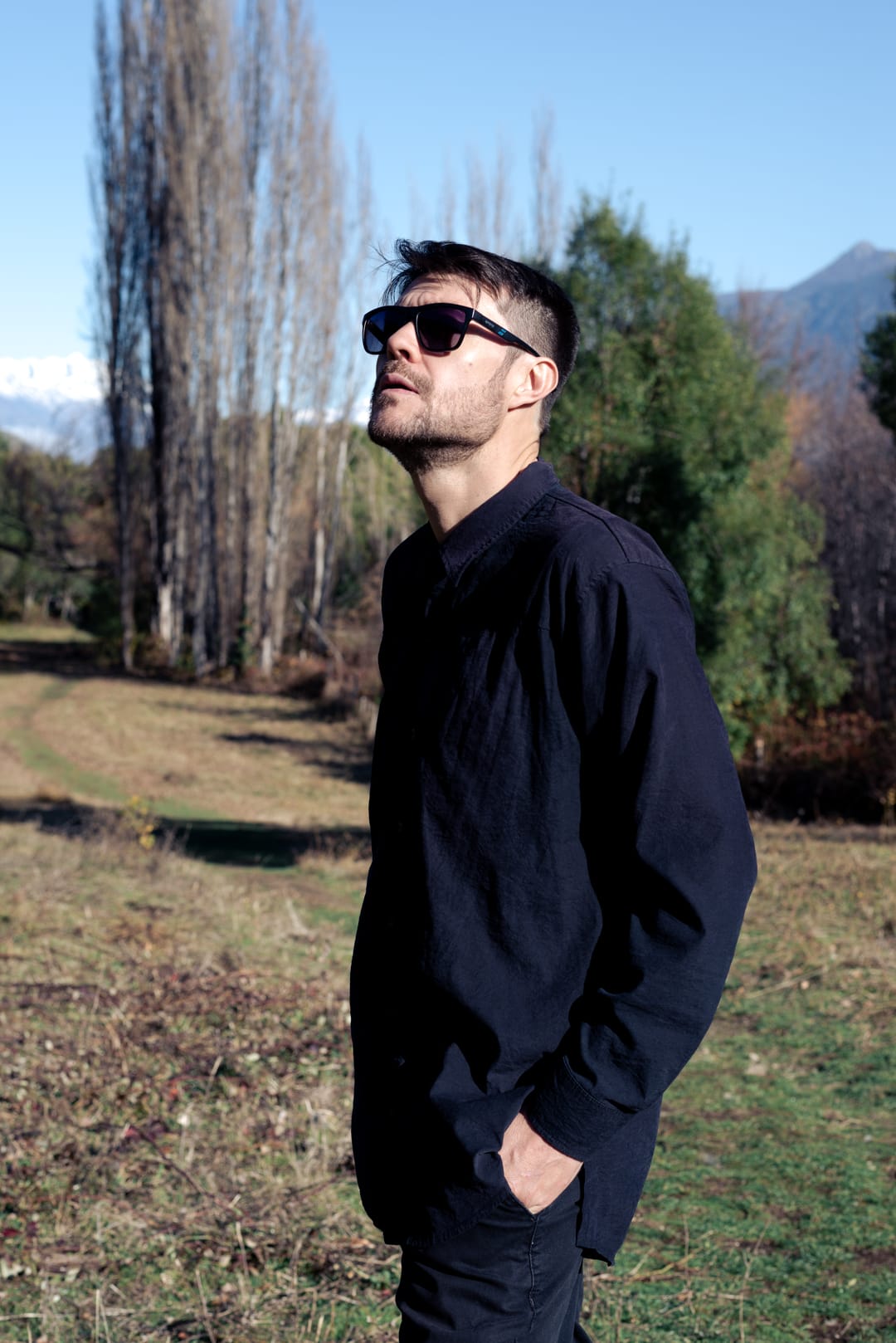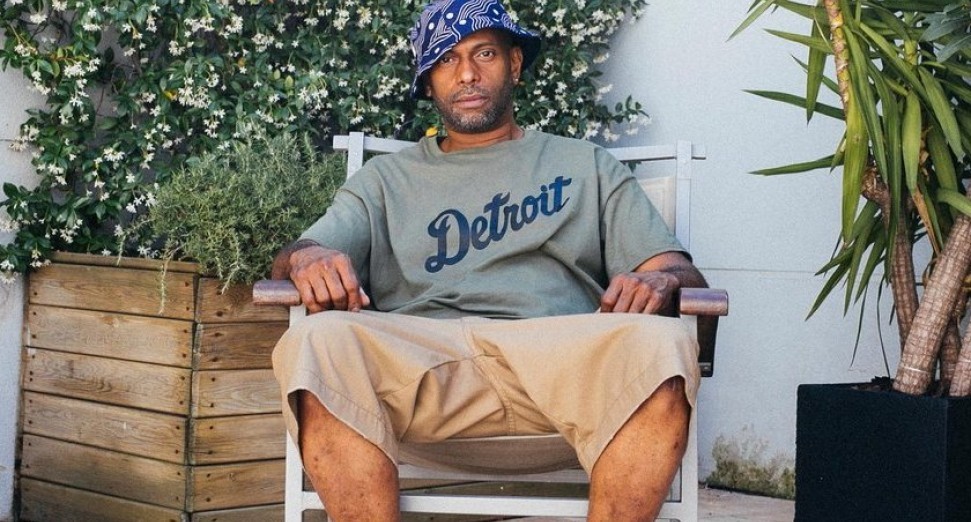
Magnetic Mix 267: Hermetics
Since his early records on R&S and ZZK, Hermetics (aka Santiago Niño) has explored electronic music as a form of ritual and renewal. His work across labels like Multi Culti and Optimo Music leans into rhythm as a tool for transformation.
On his new remix of Oora’s And Then, It Faded, Hermetics takes a moment of quiet introspection and turns it inside out.
The original, recorded live by Italian artist Oora using a Vermona Perfourmer and Minimoog, is a study in restraint: looping synth figures, soft distortion, a mood that hovers somewhere between nostalgia and resolve. Hermetics hears something else in it. His version folds in broken percussion, shuffling groove and a low-slung swing that never fully settles.
We love his reflip, and were hyped to invite him to our mix series. Check out the mix and interview below.
You’ve said you didn’t want to break the emotional core of Oora’s original. What did that mean in practice? How do you know when you’ve added enough without tipping things over?
What captivated me from the start was the main melody — so subtle, simple, and pure. My intention was to let it remain the centerpiece while building a rhythm around it that wouldn’t overshadow its essence. I spent a long time experimenting with different patterns, adding and removing elements, repeating them endlessly, until I finally reached that moment where everything clicked — the melody, the rhythm, and all the surrounding layers blended in a way that allowed the melody to truly breathe and expand.
The remix has this slightly off-kilter swing to it. Was that something you planned from the start, or did it come out of messing with the stems and seeing where things landed?
To be honest, I never start a remix or original track with a clear idea in mind. I usually let the atmosphere and the sounds guide me — intuitively and sensorially — as the process unfolds. I try not to think in terms of genres, styles, or fixed structures. Instead, I follow a certain sensitivity, a kind of atmosphere I begin to channel. With this remix, I had no clue how it would turn out until it was already well underway. That sense of freedom — the absence of expectation — is what drives my creative process. I love being surprised, especially by myself. The only thing I was certain of from the beginning was that I wanted it to be something for the dancefloor.
Your music often treats rhythm as something more than just a beat to follow. On this track, it feels like rhythm is hiding in the spaces. What pulled you in that direction?
Oora’s synths already carried a strong rhythmic presence, so I didn’t want them to get buried under the percussion. That’s why I opted for a more minimalist approach — prioritizing the texture and tone of the percussion over complexity or variation. With melodies as rich and expressive as Oora’s, there’s no need to compete with heavy rhythmic layers. Sometimes, less truly is more. It’s all about finding the right balance when working with such powerful harmonic material.
You mentioned the video of Oora’s live jam hit you in a particular way. Was it something about the setting, the performance, the vibe? What clicked for you when you watched it?
Watching Oora’s video, I felt the raw electricity of electronic music in its purest form. There was honesty, freedom, and a rush of euphoria that reminded me of the early days of the rave and dance scenes. It stirred a deep nostalgia — and even though there was no rhythm, it still made me want to dance. That’s part of what inspired me to add a more conventional beat. It transported me back to the golden era of trance and progressive. There was something undeniably real in his performance — something rare these days — and I wanted to tap into that.
There’s a lot of patience in the way the remix unfolds. Were you trying to stretch out that reflective quality, or did the mood just naturally steer things that way?
As I mentioned before, I knew from the start that I wanted this to be a track for the dancefloor — but I also wanted it to unfold slowly, like the classic electronic and dance records. I feel that long-form, patient hypnotism that once defined festival music has largely been lost. Oora’s music evokes that spirit, and it inspired me to let the structure breathe and stretch out. I wanted the remix to feel like a real journey.
You’ve released on labels that sit in quite different corners of electronic music. Do you find yourself shifting gears depending on where a track is going to land, or is it more instinctive than that?
I don’t think about labels, styles, or genres when I make music — I simply create what I feel in the moment. Only once the piece is finished do I start to consider where it might fit. I believe that’s the most genuine way to engage with creativity. Trying to define it too early, by thinking in terms of categories, only limits the creative process.
This track sits somewhere between UK garage and slower techno, but it’s pretty loose around the edges. Were there any recent records or artists that helped shape the tone?
The UK sound has always been deeply woven into my music — from breaks and jungle to UK garage. It’s something that comes naturally. There’s a rawness, a darkness, and an energy in that atmosphere that aligns perfectly with the aesthetic that speaks to me on a soul-deep level. It’s not about any one track or artist — it’s more of a feeling, a spirit that runs through everything I create.
You’ve said electronic music can be a tool for renewal. Does remixing give you that same sense of starting fresh, or is it more about responding to someone else’s vision?
When I approach a remix, my intention is to amplify an aspect of the original track that may have gone unnoticed — to imagine an alternate universe inspired by the song, not by breaking it down, but by expanding it in ways the original already hints at. There are infinite dimensions within the soul and essence of a piece of music, and the role of the remixer is to uncover and highlight those layers without compromising its core. To me, it’s a beautiful act of transformation — and at the same time, of preservation. That’s why I love remixing: it’s a noble, deeply rewarding creative practice.
Tell us about the mix you’ve put together for us – any tracks in particular you’d like to highlight?
This is a pretty eclectic mix, featuring some of the artists I’ve been enjoying a lot lately like Bodhi, Tourist, and others. It’s divided into two parts: the first is more melodic, with touches of UK garage, spacey textures, ambient, and house; the second shifts toward darker, break-driven sounds.
One thing I’d love to highlight is that I included two unreleased tracks of mine at the end. One is an original called “You Deserve Good Things,” which is set to be released later this year on my own label, Otherness. The other is a remix I did for Argentine producer Jin Yerei, reworking his track Off The Grid, which will be part of a forthcoming remix compilation of his latest album.
To wrap it up, I wanted to pay tribute to my early days in electronic music with a track I used to play all the time around 2006–2007 by Mauro Picotto and Riccardo Ferri. Listening back now, it really hasn’t aged at all — still a total banger!
Mix tracklist:
- Matthew Herbert & Momoko Gill – Babystar
- Jose Gonzalez – Heartbeats (Logic1000 Remix)
- Jinjé – Into the Breach
- Facta & Parráis – Diving Birds
- Polygonia – Beyond Light And Shade
- LCSM – Let Me (Xtra Brux Remix)
- Clive From Accounts – That Rhythm
- Tourist – Blink
- Sunswell – Genius Of Time
- Sansibar – Elastic
- Patrick Holland – Fast Forward
- Damian Lazarus & Mathew Jonson – R U Dreaming?
- WheelUp & Sam Interface – Copacetic
- Villager & Waleed – Pig
- Holloway – Into The 00´s
- Bodhi – T.O.P
- Opal Sunn – Elastic (Phase 1)
- Hermetics -You Deserve Good Things
- Jin Yerei – Off The Grid (Hermetics Remix)
- Mauro Picotto & Ricardo Ferri – Greens



